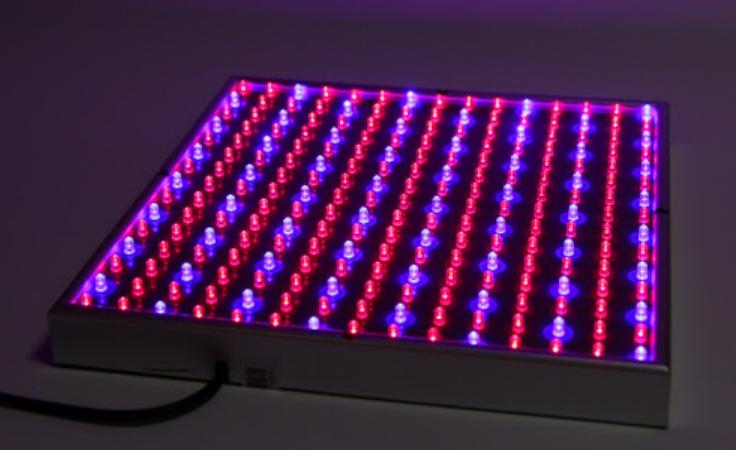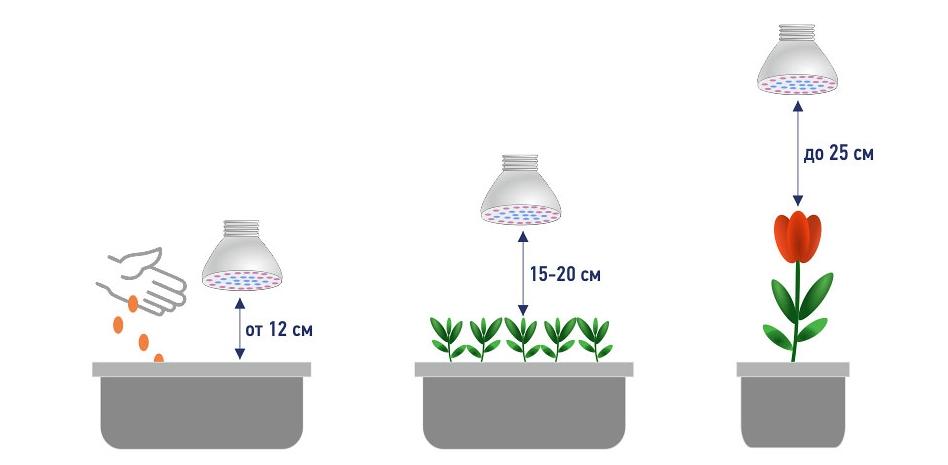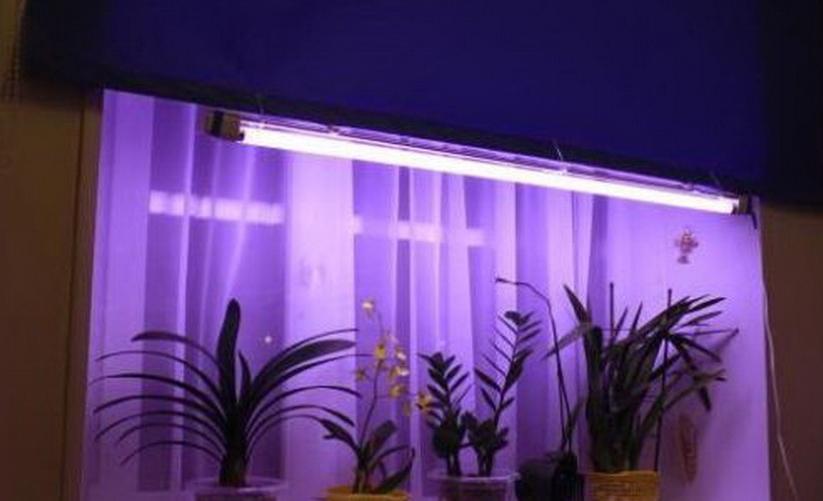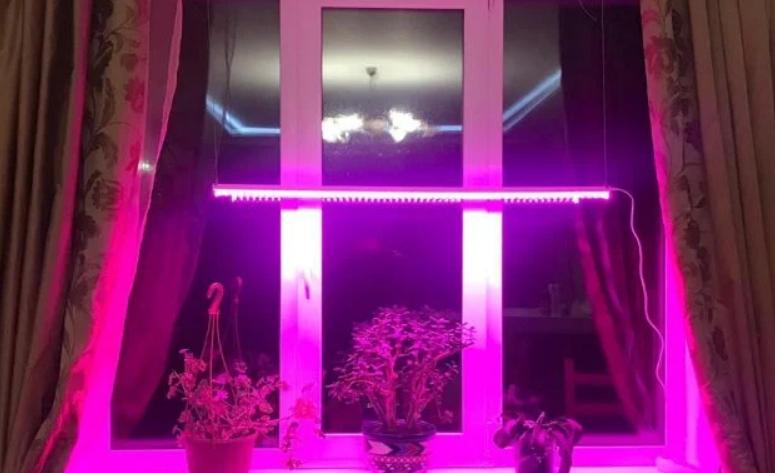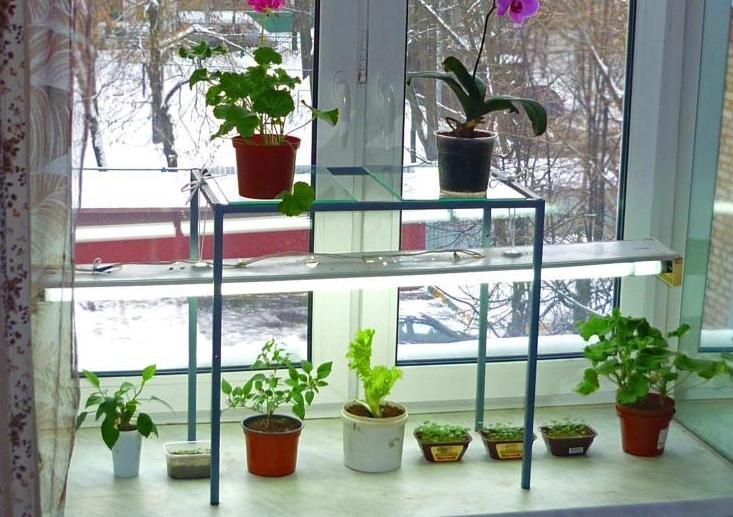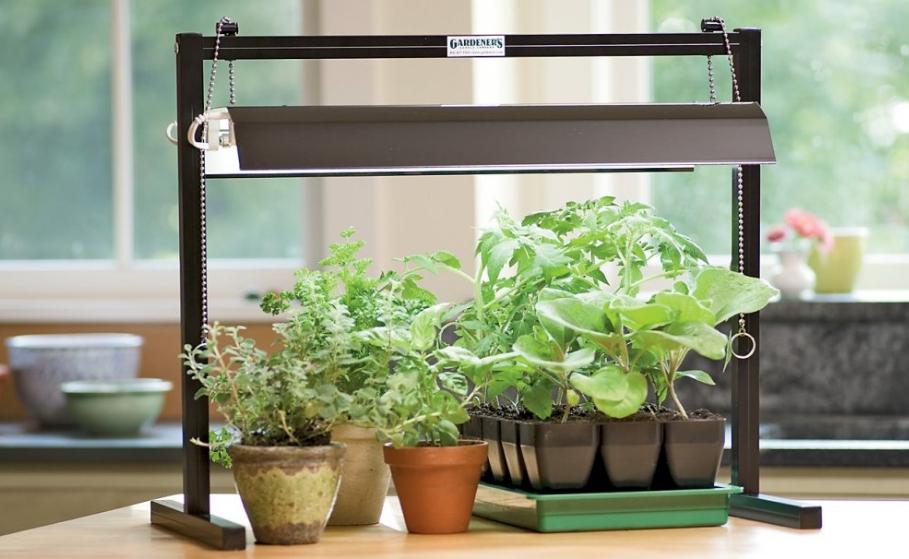Phytolamps for plants - what are they and how to use them properly
Phytolamp - a light source of a special type, the spectrum of which is specially adapted for the best growth and development of plants. And this does not include a particular variety, but several types of lamps that have certain characteristics and can be used for additional lighting of plants in rooms, greenhouses or hothouses.
What is it and what is it for
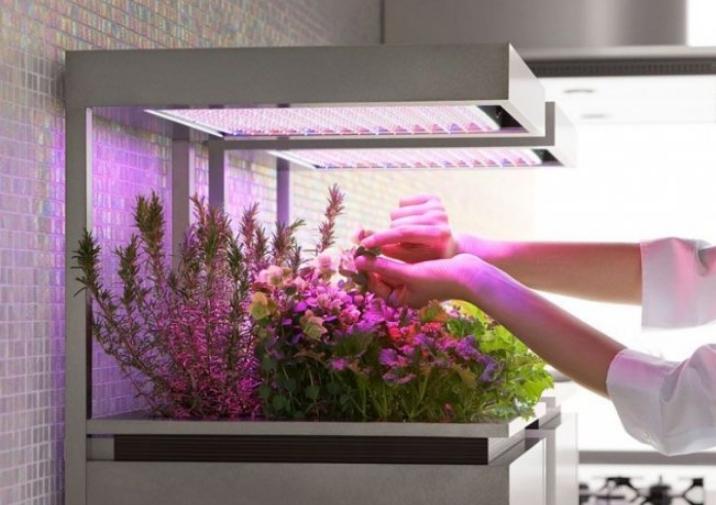
In appearance, the phytolamp for houseplants almost does not differ from the usual, the main differences are as follows:
- The equipment is specifically designed for the cultivation of indoor plants or seedlings. Therefore, its light is adapted to these purposes, its action ensures normal metabolic processes and photosynthesis. Information about the purpose is always on the packaging, so it is necessary to be sure to study it.
- Lamps can be in different configurations: standard bulbs for cartridges, tubular versions for square or rectangular shaped lamps, small elements with LEDs. There are many variations, and they are often sold as prefabricated lights, which simplifies installation and wiring.Often the design consists of blue and red LEDs.
- Since you need to illuminate a small space and provide maximum light intensity, the design almost always has a plafond that directs the flow to a certain area. It is best if the system allows you to change the height of the lamp and its position to adjust the equipment depending on the size of the plant and lighting requirements.
- Buy a phytolamp you can only in hardware and horticultural stores or in special electrical sections. In small towns there may be problems with the purchase.
Because of the peculiarities of use and complexity of manufacturing options for houseplants is much more expensive than standard. You can not save on quality, as cheap lamps often do not meet the stated characteristics.
Pros and cons
Phytolamps have advantages and disadvantages to remember when choosing and buying. The advantages are:
- Concentration of light in a small area of space. This allows you to use the electricity to the best advantage, because the light is not distributed around, but only where you need it.
- Modern lamps last at least 50,000 hours, this allows them to be used for decades. During this period, the characteristics of light hardly change, which is also important.
- To properly install and connect the lamp, you do not need to understand complicated instructions. Everything is simple and straightforward, the main thing is to determine the appropriate characteristics and find the optimal height.To use these tips when determining the height of the lamps is the easiest.
- When using LED equipment, you can adjust the brightness of the light, which allows you to adjust it to any plants. You don't have to buy several lamps for different plants, the indicators can be adjusted with one turn of the regulator.
Since LED equipment operates from 12 V, the lamps are safe to use, the risk of fire is minimal, which is important for systems that run for a long time without human control.
Of the disadvantages are the high price of the products and dangerous fumes in fluorescent lamps.
How a phytolamp differs from an ordinary lamp and daylight bulb
To make it easier to understand, you can compare standard options with special ones. This will help you understand the difference and use what you need:
- Standard incandescent bulbs give a yellowish light that is comfortable for human vision, but unsuitable for plants. This is because the emission is mostly red and yellow, and there is no blue, making this option unsuitable for use in supplemental lighting.
- Daylight bulbs can be used for houseplants and seedlings because they give a full spectrum. But they consume much more electricity and are often larger, which is not always convenient when mounting the light above the plants.
- Phytolamps give radiation with peaks in the blue and red segments of the spectrum, because this is what is needed for normal plant development. You can not use them as normal light sources, they do not give the most comfortable light for the eyes and do not provide a normal visibility in the room.
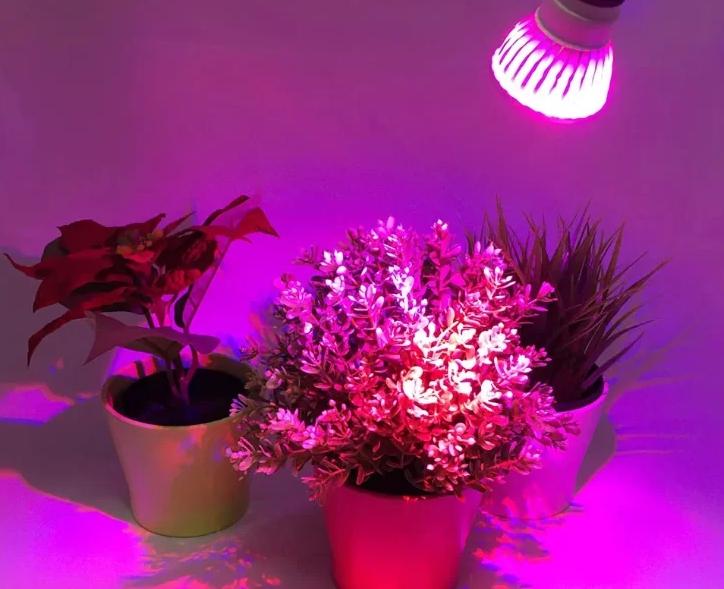
The opinion of many people that phytolamps are harmful to health is wrong. Blue and red spectra create only visual discomfort, but not harmful to the eyes, because their ultraviolet radiation is weak. In addition, the light is usually directed at the plants by the plafond and practically does not spread around the room.
Types of phytolamps, main characteristics
To create a comfortable microclimate and use a lamp for plants without fear, you need to choose the best option. There are several types used for supplementary lighting, each has its own characteristics:
- Incandescent bulbs. This option is almost not used, because it consumes the most electricity and during operation is strongly heated, which creates a risk of burns for plants. It is necessary to raise the lamp high, which reduces its effectiveness. Only special models with a blue and red spectrum are suitable for plants, they are much more expensive, but they do not last long - about 1000 hours.
- Halogen lamps are much more efficient than filament versions, but they also do not last very long and get very hot when used. At the same time you can get light close to the natural radiation of the sun. There are options operating from standard voltage and low-voltage lights, connected through a power supply.
- Fluorescent lamps can be in the form of tubular emitters or with standard socket bases. They give high-quality light with the right spectral peaks, flicker may be observed, but it is not crucial for plants. The surface is not heated during operation and can be placed at a small distance from the leaves, the power consumption is small, which is also important.Fluorescent options are convenient when used on a narrow window sill.
- LED options can be both in the form of lamps, and in the form of lights with certain characteristics. It is better to use low-voltage models that operate from a 12 V power supply, it comes already built into the design. You can pick up a variant with any color temperature, if you need daylight, the optimal indicator will be 6200-6400 Lm. Electricity consumption is the lowest, and the service life exceeds 50,000 hours.
LED lamps are the most durable and safe today, it is best to choose them for additional lighting of indoor plants and seedlings.
An overview of the prices of popular models.
Rules of use
The principle of phytolamps is simple - it allows you to provide an optimal length of daylight for plants, regardless of external conditions. But to ensure the best effect, it is necessary to follow a few simple rules:
- Select the power of radiation for a particular plant. Usually 50 to 150 watts of power per square meter is needed when using LED bulbs, if the size of the container is less, recalculation is done. You can also use the data in lux, each lamp has them, so it is not difficult to understand.
- Take into account the height of the location of the lamps over the tops of the plants. The more it is, the higher the correction factor to use. So, at a height of 15 cm you need to increase the lamp power by 1.2. For heights of 30 and 60 cm, use factors of 1.4 and 2, respectively.
- Remember that the distance is not from the ground, but from the tops of the plants. Therefore, the position of the lights changes over time and you need to check it at least once a week. To avoid burning the plant, it is easiest to put the palm and hold it under the light for about a minute, there should not be any discomfort.
- When installing it is better to use a special design that allows you to quickly change the position of the lamps, fixing them at the right level. You can make the system yourself and simply change the length of the rope or twine on which the plafond is suspended.You can hang the lamp on a sturdy cord.
- Choose the time of use depending on the light of the day. It is optimal to keep the plants on the windowsill, so they get as much natural light as possible.
When illuminating, it is better to turn on the lamps in the morning and evening to mimic natural conditions.
At the end of the video: How to place the phytolamp correctly.
If you need a phytolamp for home use, it is not difficult to find it - there are special models on sale for such purposes. The main thing is to determine the right parameters and choose a lamp with the right power. The most effective - LED models.
